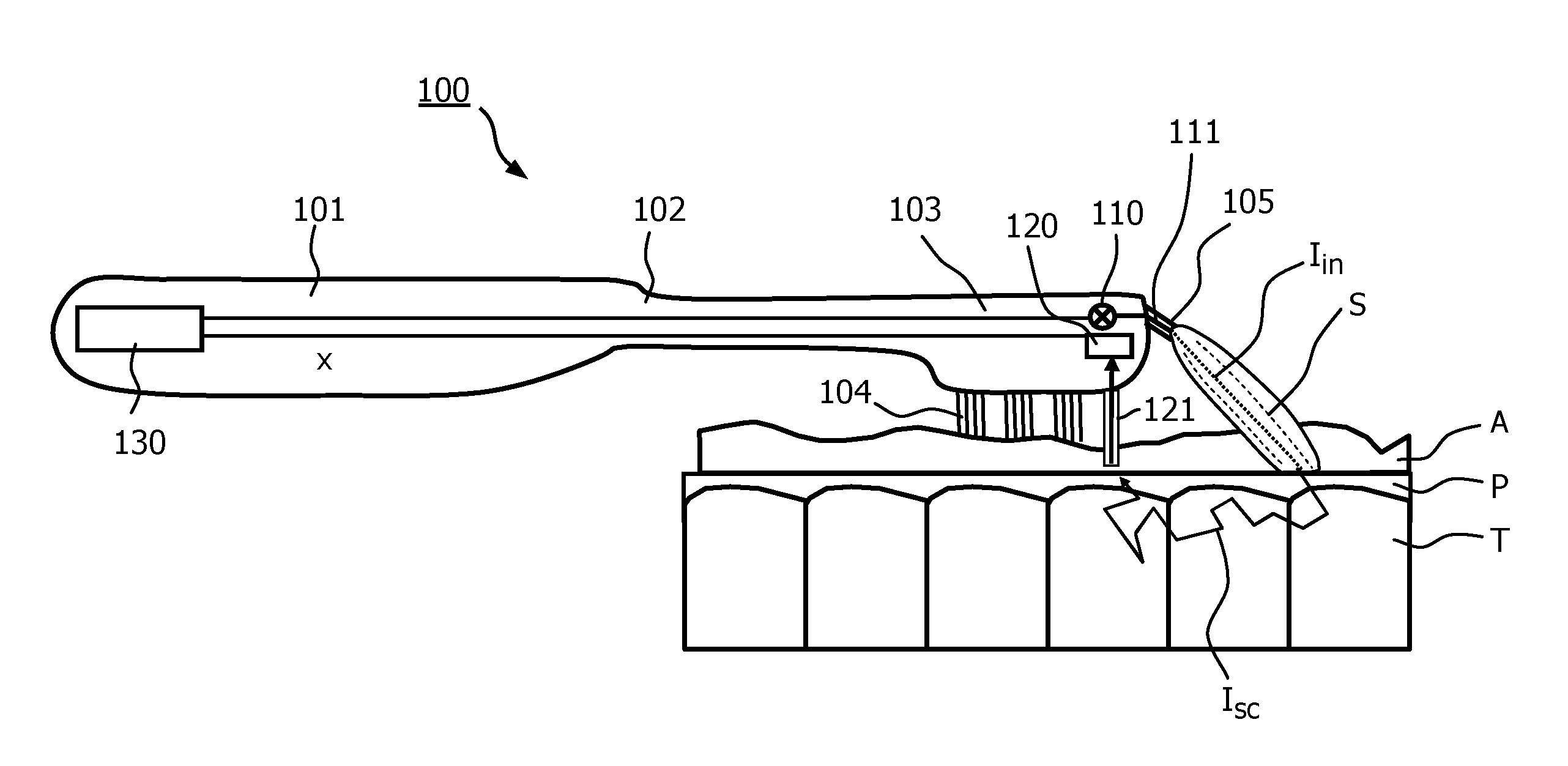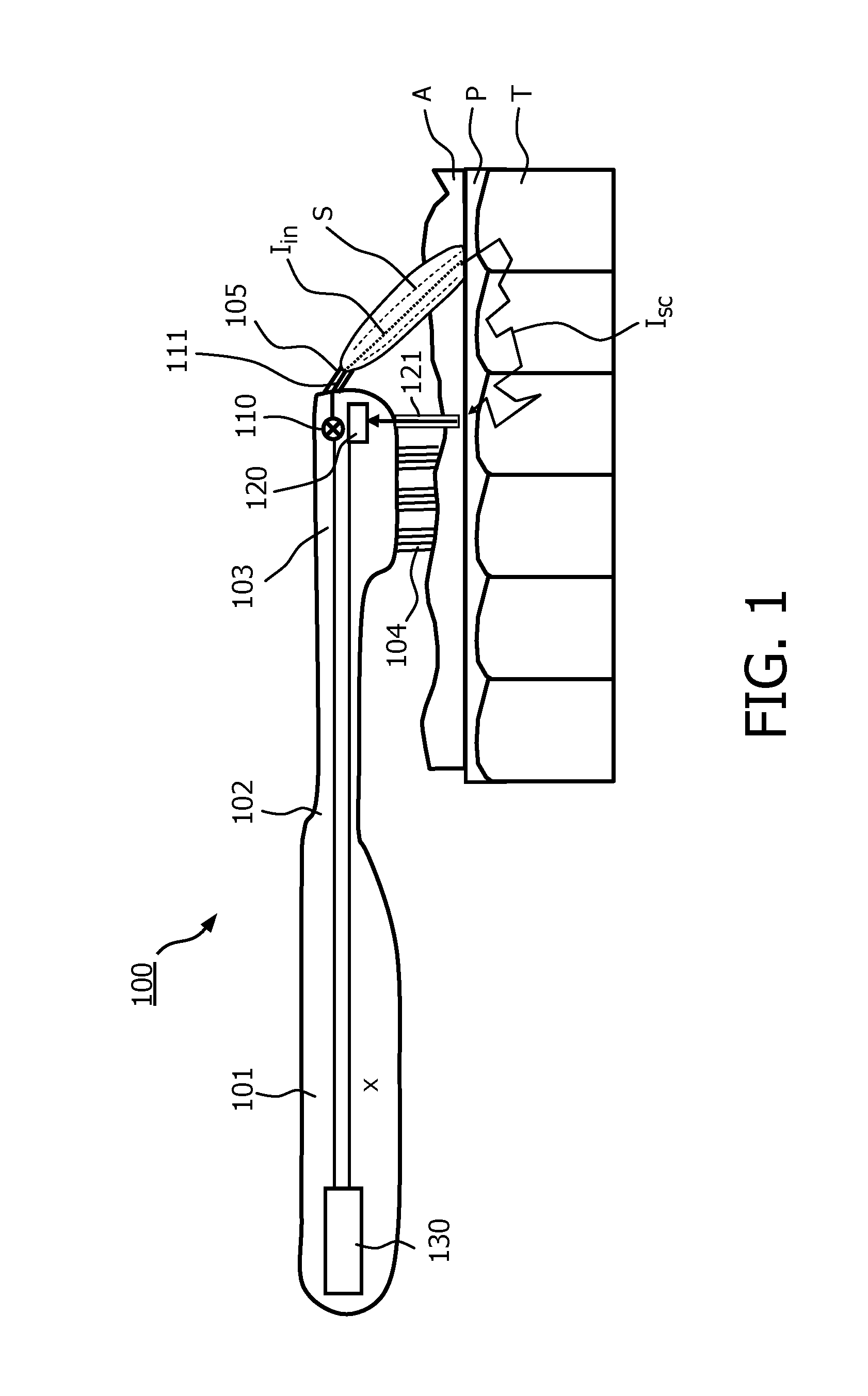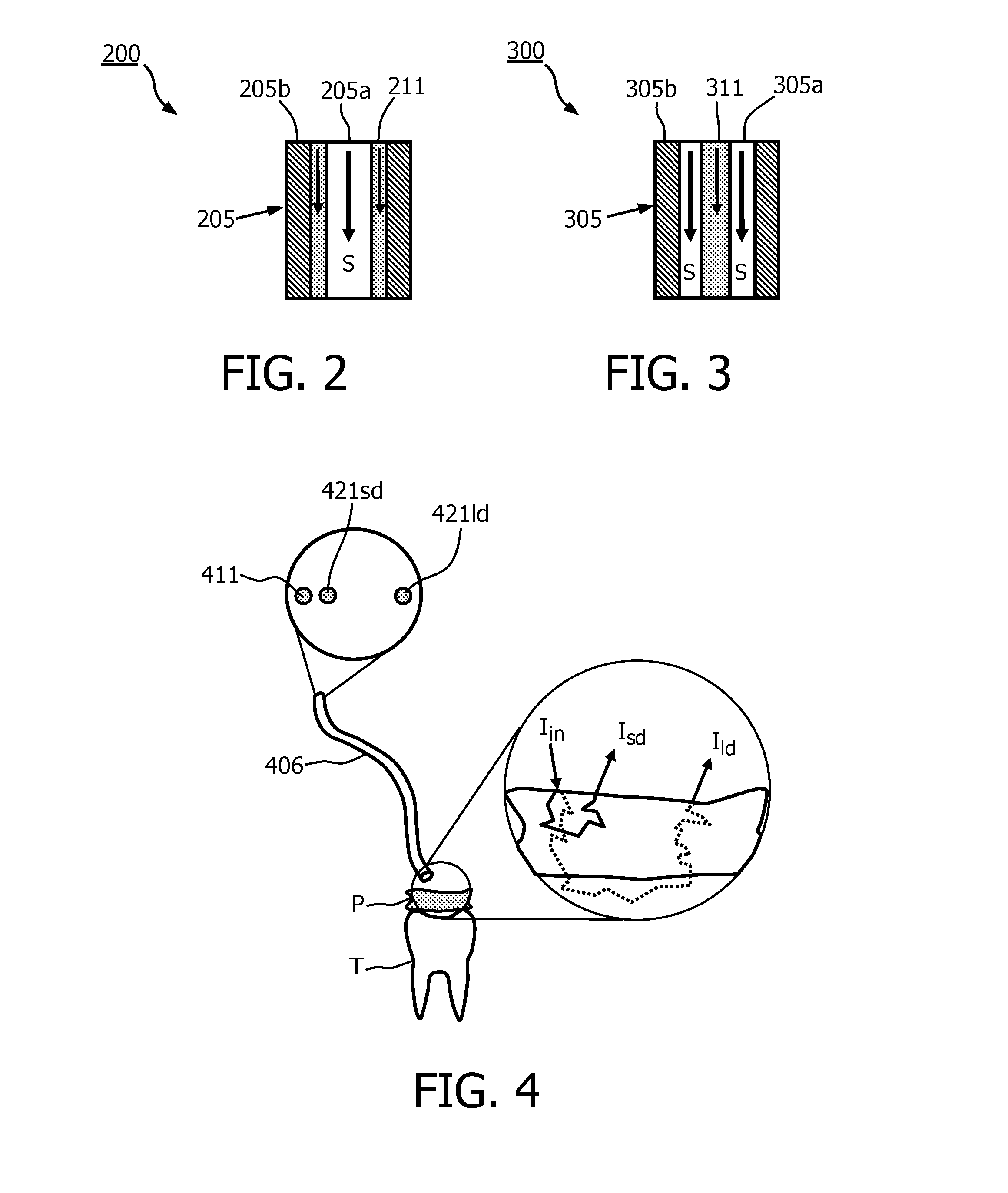Device for dental plaque detection
a technology for plaque detection and dental plaque, applied in the field of dental plaque detection devices, can solve the problems of only being suitable for professional applications, requiring expensive optical filters, and high cost, so as to improve the treatment of dental plaque and optimize the efficiency of tooth cleaning
- Summary
- Abstract
- Description
- Claims
- Application Information
AI Technical Summary
Benefits of technology
Problems solved by technology
Method used
Image
Examples
Embodiment Construction
[0047]Dental plaque is defined clinically as structured, resilient, yellow greyish substance that adheres tenaciously to the intraoral hard surfaces, including removable and fixed restorations. It is an oral bio-film characterized by its organized structure consisting of a multitude of bacteria and fluid-filled channels, particularly of bacteria in a matrix of salivary glycoproteins and extracellular polysaccharides.
[0048]Based on its position on tooth surface, dental plaque may be classified into supragingival plaque or subgingival plaque. The maturation of oral plaque is very variable, depending on location in the mouth, age, time, oral environment and other factors. Despite this variability, oral plaque develops according to reproducible patterns.
[0049]The invention is generally related to oral healthcare, in particular to a technology to support the hygiene and health of teeth and to help users to clean their teeth from plaque.
[0050]The aforementioned objective may particularly ...
PUM
 Login to View More
Login to View More Abstract
Description
Claims
Application Information
 Login to View More
Login to View More - R&D
- Intellectual Property
- Life Sciences
- Materials
- Tech Scout
- Unparalleled Data Quality
- Higher Quality Content
- 60% Fewer Hallucinations
Browse by: Latest US Patents, China's latest patents, Technical Efficacy Thesaurus, Application Domain, Technology Topic, Popular Technical Reports.
© 2025 PatSnap. All rights reserved.Legal|Privacy policy|Modern Slavery Act Transparency Statement|Sitemap|About US| Contact US: help@patsnap.com



